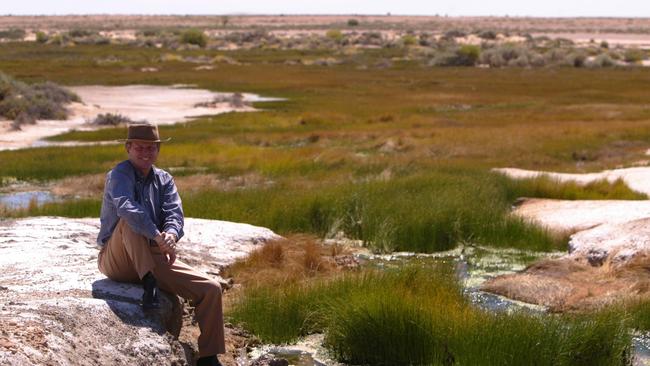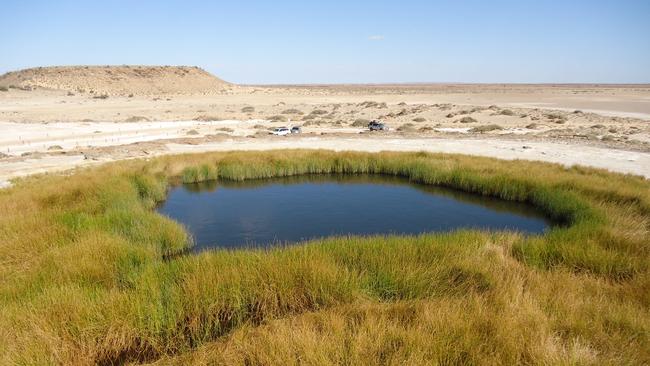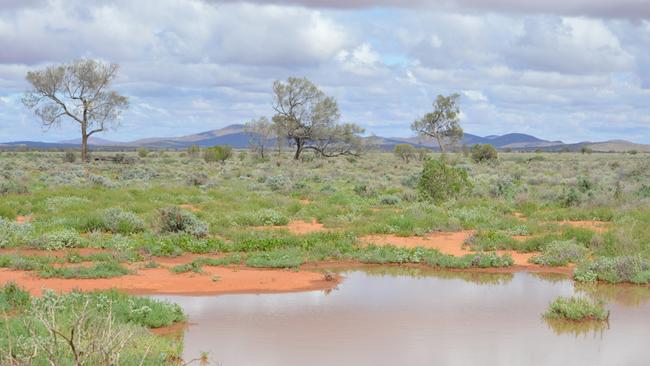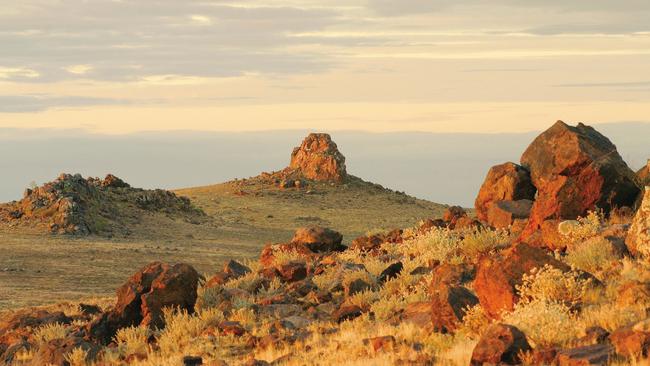Mound springs next ‘Juukan Gorge’ site of destruction, inquiry told
A probe into the destruction of WA’s Juukan Cave has heard another miner is among businesses killing one of SA’s natural and cultural marvels.
SA News
Don't miss out on the headlines from SA News. Followed categories will be added to My News.
The case of the disappearing mound springs in outback SA was heard on Tuesday as part of the inquiry into the destruction of 46,000 year old caves at the Juukan Gorge in the Pilbara, Western Australia.
The terms of reference of the inquiry extend to the protection of other culturally significant sites through better state and federal laws.
Ancient groundwater from the Great Artesian Basin feeds thousands of springs at the southern edge of Kati Thanda, Lake Eyre in Arabana Country.
But as Arabana Aboriginal Corporation chairwoman Brenda Underwood told the inquiry, many springs have disappeared in the last 30 years and the flow to others is slowing.

“I would therefore urge you to inquire into what’s happening with water in the Great Artesian Basin and the use of it, not just by BHP, but by the pastoral and petrochemical industries, before our springs, like the caves disappear,” she said. “It is unsustainable, destructive of nature and destructive of our culture, to allow the springs to die.”
Just as Aboriginal families and language groups have been devastated by past legislation which removed people from the land and destroyed family and tribal structures, the existing legislation continues to destroy connections to the ancestors, Ms Underwood said.
“It is a conflict of interest surely that the South Australian Minister for Aboriginal Affairs is also the Premier,” she said.
“Unless something is done by the Commonwealth these springs will disappear, along with many endemic endangered species of plants, fish, birds and invertebrates that depend on these springs.”

BHP takes about 34 million litres a day from the Basin, yet recognises the mound springs are “culturally significant to the Arabana Traditional Owners and ecologically important”.
“BHP engages regularly with the Arabana people on a range of matters,” a spokesman said.
“We both recognise that more work needs to be done together to understand the impacts of water drawdown and inform a path forward.”
However there are many other water users amounting to an estimated total extraction of 200ML a day from the Basin including BHP’s take of 34 million litres as well as bores on pastoral land and large amounts of water used in gas drilling and fracking.
“The GAB is an important water source for many users,” the BHP spokesman said.
“We continuously monitor and publicly report our water draw under a program approved by the South Australian government. We’re always looking for ways to reduce our on-site water use of 34 ML/d through water savings and alternative sources, and to help preserve GAB resources more broadly.”

CONSERVATIONISTS REJECT PASTORAL LANDS ACT CHANGES
A swath of the state’s major conservation groups are threatening to pull out of consultation over changes to how pastoral lands are managed, fearing their concerns have largely fallen on deaf ears.
A group of 16 organisations, including the Conservation Council, Nature Foundation, Australian Wildlife Conservancy and Birdlife Australia, are lobbying Primary Industries Minister David Basham on the issue.
They said Mr Basham’s statements indicated the Government would not make changes to its Pastoral Lands Bill to address “any of the very serious issues we have raised”, beyond limited consultation on alternative land uses.
Proposed changes to the Pastoral Lands Act will increase lease tenures from a maximum 42 years to up to 100 – a move the Government says is vital for carbon farming agreements. The rangelands cover about 40 per cent of South Australia. The conservation organisations have raised worries about the longer lease lengths, and moves to axe maximum animal stocking rates.
The organisations are also worried about a lack of clarity over whether managing leases for conservation and other uses will still be allowed, limited consultation with native title holders and the removal of “balanced representation” from the Pastoral Board.

“Without amendments, the proposed bill will likely increase degradation across over 40 million hectares,” the organisations said in a letter to Mr Basham. The minister in May said the Government would work with stakeholders on policies for alternative land uses on pastoral leases.
But the groups say they will not take part in consultation unless broader issues are discussed, and the Government indicates it is open to “significantly” amending its bill.
Mr Basham said the Government consulted widely with pastoralists, conservationists and native title holders.
He said work would progress on policies to support tourism and conservation on pastoral leases, and welcomed the conservation groups “returning to the table”.
Mr Basham said longer leases encouraged pastoralists to invest in tourism projects. “Pastoralists are custodians of the land they are on and as they have demonstrated over many years are often best placed to undertake conservation activities which are beneficial for everyone,” he said.
– Michelle Etheridge





